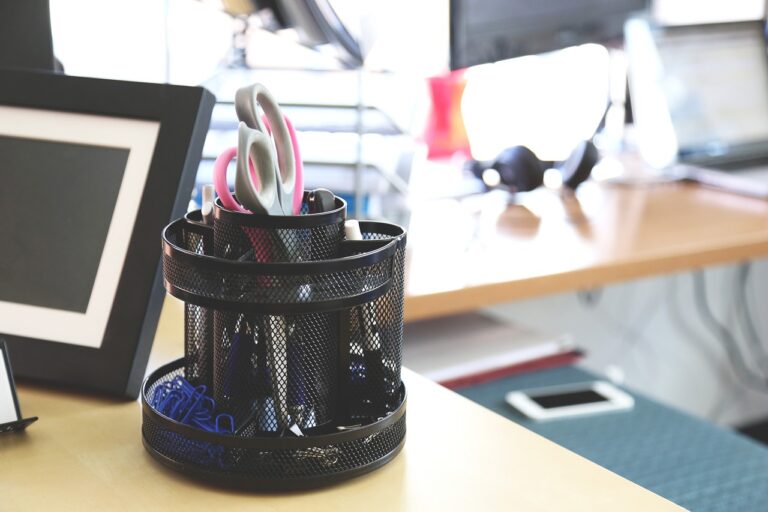Ergomeister Chair Review: Is It Worth Your Money?
When shopping for a high-end ergonomic chair, one name that frequently comes up in reviews and comparisons is Ergomeister. In this Ergomeister Chair Review, I dig deep into its design, comfort, performance, and value—based on user impressions, testing, and comparisons with other premium chairs on the market. Whether you’re working long hours at your desk or seeking a chair that adapts to your posture needs, this review will help you decide whether Ergomeister lives up to the hype.
Introduction: Why Ergonomic Chairs Matter
In today’s age of remote work, freelancing, and extended screen time, sitting for hours is more or less unavoidable for many. Poor seating leads to back pain, neck strain, and reduced productivity. A good ergonomic chair is not just a luxury—it’s an investment in your health, comfort, and work performance.
Ergomeister is one of the relatively newer names making waves in the premium ergonomic chair segment. It positions itself as a high-quality option capable of rivaling established brands. Before you shell out a significant sum, though, it’s important to know what you’re getting.
Overview: Ergomeister Brand & Models
Ergomeister doesn’t offer dozens of models; instead, it focuses on a few flagship options with customizable features. Their line tends to emphasize:
-
Modular adjustability — users can often tune multiple elements (armrests, lumbar, tilt, headrest)
-
Premium materials — mesh backs, high-density foam, robust frames
-
Ergonomic support — curve, posture alignment, dynamic movement
Because of this focused approach, comparison reviews (like ones that pit Ergomeister against brands like Hinomi or NextChair) often explore how well Ergomeister balances comfort, features, and durability.
Design & Build Quality
Materials & Aesthetics
Ergomeister typically uses breathable mesh for the chair back, combined with a sturdy aluminum or reinforced composite frame. The mesh prevents overheating and provides flexible support, while the frame ensures long-term stability. The overall look leans modern and minimalistic, with a few accent choices (e.g. black, gray, or white finishes).
Structure & Mechanics
Key structural elements include:
-
Seat base: Usually a rigid shell with cushioning or optional padding inserts.
-
Tilt mechanism: A synchronized tilt or multi-mode tilt that allows reclining while keeping feet grounded.
-
Gas lift & pistons: Class-4 or equivalent gas springs for height adjustment.
-
Armrests & headrest: 3D or 4D adjustable armrests (height, depth, pivot) and a height / angle adjust-able headrest in more premium variants.
Customers often commend the sturdy build—no wobbling or flexing under typical loads. The chair feels solid, not plasticky, which is important at this price tier.
Comfort & Ergonomics
Lumbar Support & Back Curve
One of the most critical features is how well the lumbar support fits various users. Ergomeister offers an adjustable lumbar element (either via a sliding support or inflatable module in some versions). This allows you to set lumbar firmness and position. In reviews, many users say this lumbar system does a good job, but it can take a few days of tweaking to get it just right.
The curvature of the backrest is also well designed—neither too aggressive nor too flat—allowing users of different spine shapes to find comfort.
Recline & Movement
Ergomeister chairs typically allow a decent recline range (often between 100° to 135° or more). The synchronized tilt ensures that your upper and lower body move in concert, which helps reduce the feeling of being pulled forward or “losing support” as you lean back.
It also encourages micro-movements—small adjustments that your body naturally makes while seated—without causing disruptive instability.
Seat Comfort & Cushioning
Seat comfort depends on your body shape and preferences. The combination of a firm base with optional memory foam or padding inserts offers balance: enough firmness to prevent sinking, but enough softness for longer use. The edge of the seat (the “waterfall” front design) usually slopes downward to reduce pressure on the thighs, which is a positive in many user reports.
Armrests & Headrest
The adjustable armrests let you position your arms at a comfortable height to ease shoulder and neck tension. Some users report that the armrest width (how far apart they can go) could be broader in certain configurations, so if you have a wider build, that’s worth checking.
The headrest, when present, helps support your head in restful or reclined positions. It works best if you fine-tune its height and tilt to match your neck angle.
Comparison with Alternatives
In several comparison reviews, Ergomeister is pitted against other premium chairs (for example, Hinomi or NextChair) regarding comfort, adjustability, and price. Common observations include:
-
Better adjustability than many midsize chairs, especially in lumbar and armrest flexibility.
-
Comparable ergonomics to top-tier chairs like those from established brands, but sometimes lagging in refinement or polish (e.g. in mechanisms or finishing touches).
-
Better value for feature set — users often say you get more customization per rupee (or per dollar) compared to some competitors, though build consistency can vary.
The consensus in those comparisons tends to be that Ergomeister does very well in key areas (posture support, modular flexibility) though it may lag just behind in brand prestige or after-sales ecosystem (like replacement parts, service network) in certain regions.
Pros & Cons (User-Based Summary)
Here’s how Ergomeister stacks up, based on aggregated user feedback and testing over time:
| Pros | Cons |
|---|---|
| High level of adjustability (lumbar, armrests, tilt) | Takes time to dial in all settings |
| Solid build, no wobble, premium materials | Some lower-end variants may skip certain refinements |
| Good for long hours with breathable mesh | Headrest and armrest width may not suit all body types |
| Better value (features per cost) than some high-end competitors | After-sales support or replacement parts might be limited in some regions |
| Encourages micro-movement and dynamic sitting | Initial learning curve to get optimal posture |
Who Should Use an Ergomeister Chair?
An Ergomeister chair is ideal if you:
-
Spend 6–10+ hours a day seated and want serious ergonomic support
-
Value high adjustability to fine-tune the chair to your body
-
Are comfortable tweaking settings over several days
-
Want a premium experience but seek better value compared to elite brands
-
Don’t necessarily need an extensive local service network (or are willing to import parts)
It may be less ideal if:
-
You want a truly plug-and-play chair with minimal setup
-
You’re very broad-shouldered and need extra wide armrest span
-
You live in a location with weak support or parts access
-
You prefer chairs with a more plush, cushioned “throne” feel over firm ergonomic support
Setup & Adjustment Tips
To get the most from an Ergomeister chair, here’s how to tweak it:
-
Start with seat height — your feet should rest flat on the floor, with knees ~90° or slightly more.
-
Adjust the back height and tilt — set a neutral upright position first.
-
Tune lumbar support — slide or inflate until you feel gentle pressure in your lower back.
-
Set the armrests — at the level where your arms rest naturally without shoulders lifting.
-
Fine-tune tilt tension — so reclining is smooth, neither too loose nor too stiff.
-
Adjust headrest — if present, so your neck is relaxed when leaning back.
Spend a few days with minor tweaks; your body will tell you where the pressure points are.
Maintenance, Durability & Warranty
Ergomeister chairs are generally built for longevity, but durability depends on usage and care. Key pointers:
-
Keep the mesh clean and dust-free — vacuum or gently wipe periodically
-
Avoid harsh chemicals on the frame or fabric
-
Use within recommended weight limits
-
Occasionally check bolts and screws for tightness
Warranty coverage can vary depending on your region, so check your local supplier. Because Ergomeister is not as globally entrenched as some legacy brands, ensure that you have access to replacement parts (casters, gas lifts, cushions) in your area if needed.
Verdict: Is the Ergomeister Worth It?
The Ergomeister chair is a compelling choice for those who want advanced ergonomic features without paying top-tier luxury brand premiums. With excellent adjustability, firm yet comfortable support, and solid structural integrity, it appeals to serious users who don’t mind spending some time fine-tuning. The downsides—initial setup effort, possible limitations in armrest width or accessory support, and variable service availability—are manageable tradeoffs for many.
If you’re looking for a chair that will support your posture, hold up to extended use, and offer significant customization, Ergomeister is absolutely worth considering. Just be ready to make the adjustments and check local service options before you commit.







